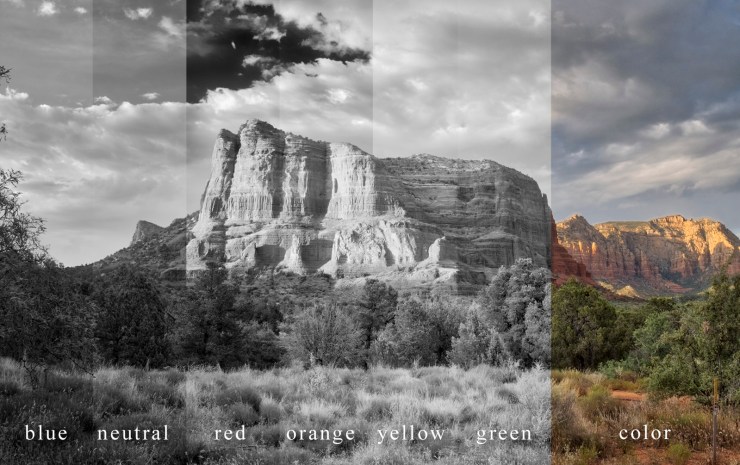Black and white imagery is the classic look for photography. Stripping away color can make an image timeless and focus on the subject in an elegant way. It’s actually quite easy to turn and image to monochrome. Some are better than others, but each have their place. Let’s talk.
Make your camera your black and white processor
Cameras these days are basically small computers with processing engines. Even the lowest point and shoot has various setting to alter your black and white choices.
Look into the menus sometimes called Shooting Styles, Photo Styles, Filter Settings or Picture Styles. There you will find choices for changing the way your camera finishes the file. Look for terms such as black and white, monochrome, sepia, dynamic monochrome, silky monochrome and more. Your camera manual is your friend.
Set your camera to process the image in black and white with one of the settings. Viola — you are done!
Note: You need to shoot in JPEG for the settings to be applied to your files. If you use RAW, that JPEG effect will be stripped from your files when you import to the computer. If you photograph in RAW, all is not lost. The settings that were used on the camera are embedded in the RAW file. You will need to get software that will extract the JPEG, like Photo Mechanic.
Deeper adjustments
If you want more control of your black and white file, many cameras have additional options. Set the camera to monochrome. Then look to the menus that change Sharpness, Contrast, Gradation and Color Filter.
Adjustments to Sharpness can add crispness or slightly soften your images.
Adding or subtracting Contrast and Gradation will influence how the light and black tones play together. Lower contrast has a black and white softer feel. Higher contrast moves images in a stark direction.

Changing color filters hearkens back to film days when we attached different color filters on the lens to change how various colors were rendered in black and white. Play with how they work. Adding a color will make that color lighter.
For example, adding a green filter will render leaves of trees closer to white. Adding yellow or red filters can darken a blue sky which can add a dramatic feel making the clouds pop.
Save your settings
Once you have dialed in a look you like, many cameras allow you to save them as Custom Settings. These are those letters C1, C2, C3 on your camera dial. See your camera manual for how to complete saving the Custom Settings.
You can be photographing in color, see a subject you would rather capture in black and white, turn to the Custom Mode and black and white it is. You can even have different recipes and save them as different custom settings. Your setting for landscapes might include one that darkens the sky and another might make the trees and grass glow.
Pros and cons
Fortunately using in camera processing your image will be a JPEG and look as it does on the back of your camera when you download.
Unfortunately, it will be a JPEG. I say unfortunate because a file with jpeg processing the changes are baked in and a lot of information is thrown away. You can do additional processing on a JPEG, but when you make changes you will be throwing even more info away.
Until you have dialed in your black and white settings to perfection you might want the best of both worlds. Shoot in RAW + JPEG. You have the camera processed file and still have the full RAW file to fall back on.
Post processing black and white in RAW
If you use the techniques above you’ll have a nice black and white but it will always be black and white. You’ll have more options and can attain even higher quality if you shoot in RAW and post process. More about that soon. In the meantime, here’s a Photoshop article with three ways to convert black and white.
Yours in Creative Photography, Bob
Tell your story with the second annual Visual Storytelling Conference!
Experience four days of interactive, online training sessions featuring a range of educational content with experienced photographers and content creators. This free event kicks off with a series of technical boot camps to build essential skills, followed by live, online sessions on photography, video, business and social media. Join live from March 10-13, 2022!
